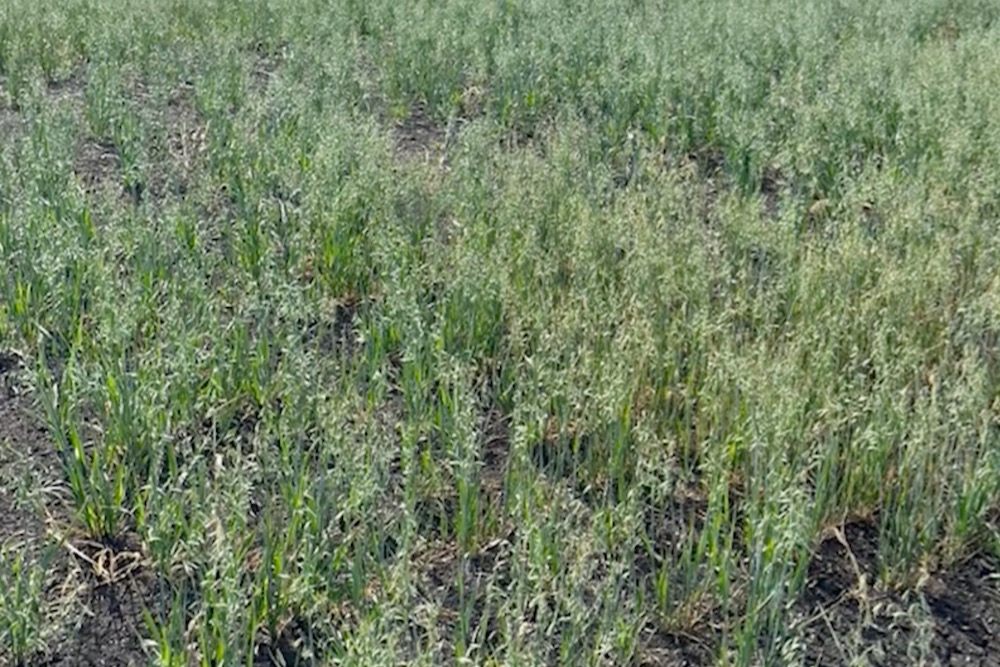Saskatchewan Crop Report: Rains benefit some crops
Between two to 83 mm of rain falls on province
| 2 min read

Crop conditions in parts of western Saskatchewan have already dropped into crop insurance range, Burce Burnett says. (WeatherFarm video screengrab)
Glacier FarmMedia | MarketsFarm — Most of Saskatchewan received heavy rainfall during the week ended July 21, but the effects on crops were varied.
The province’s weekly crop report released on July 24 noted that crops in the flower and grain fill stages benefitted the most from the rainfall, as well as livestock water sources. However, the precipitation did little to help more mature crops and pastures.
Edson and Admiral in southwest Saskatchewan reported 83 and 68 millimetres, respectively, during the week, while Bethune in the southcentral region saw 74 mm. Most areas received between 15 to 50 mm, while others had between two and 15 mm.
Cropland topsoil moisture was rated at two percent surplus, 71 per cent adequate, 22 per cent short and five per cent very short. Hayland topsoil moisture was rated at one per cent surplus, 60 per cent adequate, 30 per cent short and nine per cent very short. Pasture topsoil moisture was rated at 59 per cent adequate, 30 per cent short and 11 per cent very short.
Haying operations were delayed as producers waited for fields to dry before baling. Hay was 20 per cent standing, 21 per cent cut and 59 per cent baled or put up as silage. Hay quality was rated at nine per cent excellent, 55 per cent good, 31 per cent fair and five per cent poor.
Fall cereal and pulse crop development was 97 per cent on or ahead of their normal paces. Spring cereals were at 92 per cent and oilseeds were at 87 per cent. Perennial and annual forages were at 85 per cent.
Crops are still showing damage and stress from heat and overly dry conditions this growing season. Gophers and grasshoppers are causing minor to moderate damage to crops this week with some areas seeing higher damage depending on pest populations.
Flooding was also a concern for some producers as low spots in their fields have filled with water. The rain and strong winds have led to cereal crops lodging across many regions, and producers are hopeful the damage is minor and their crops can recover in time for harvest.


